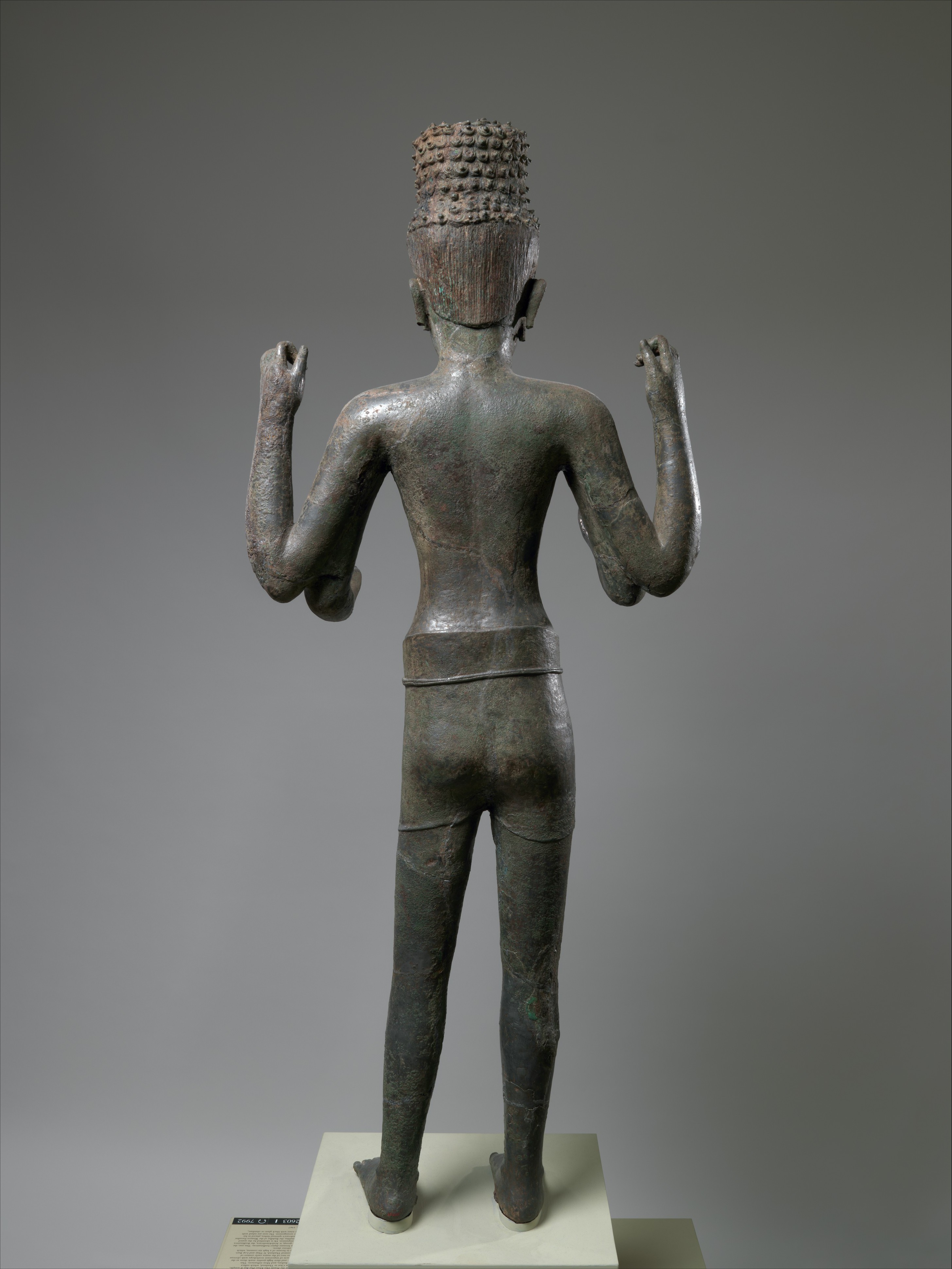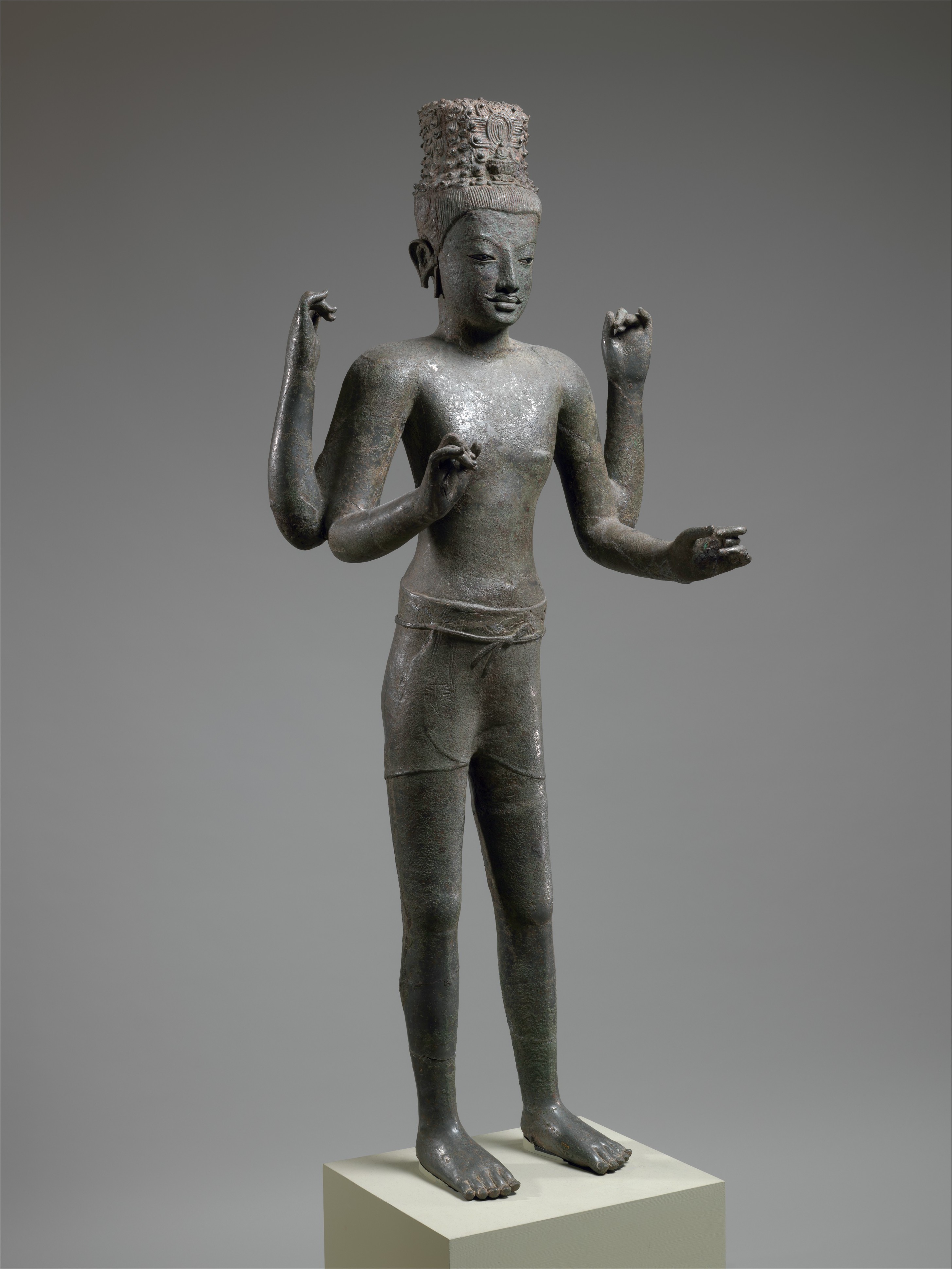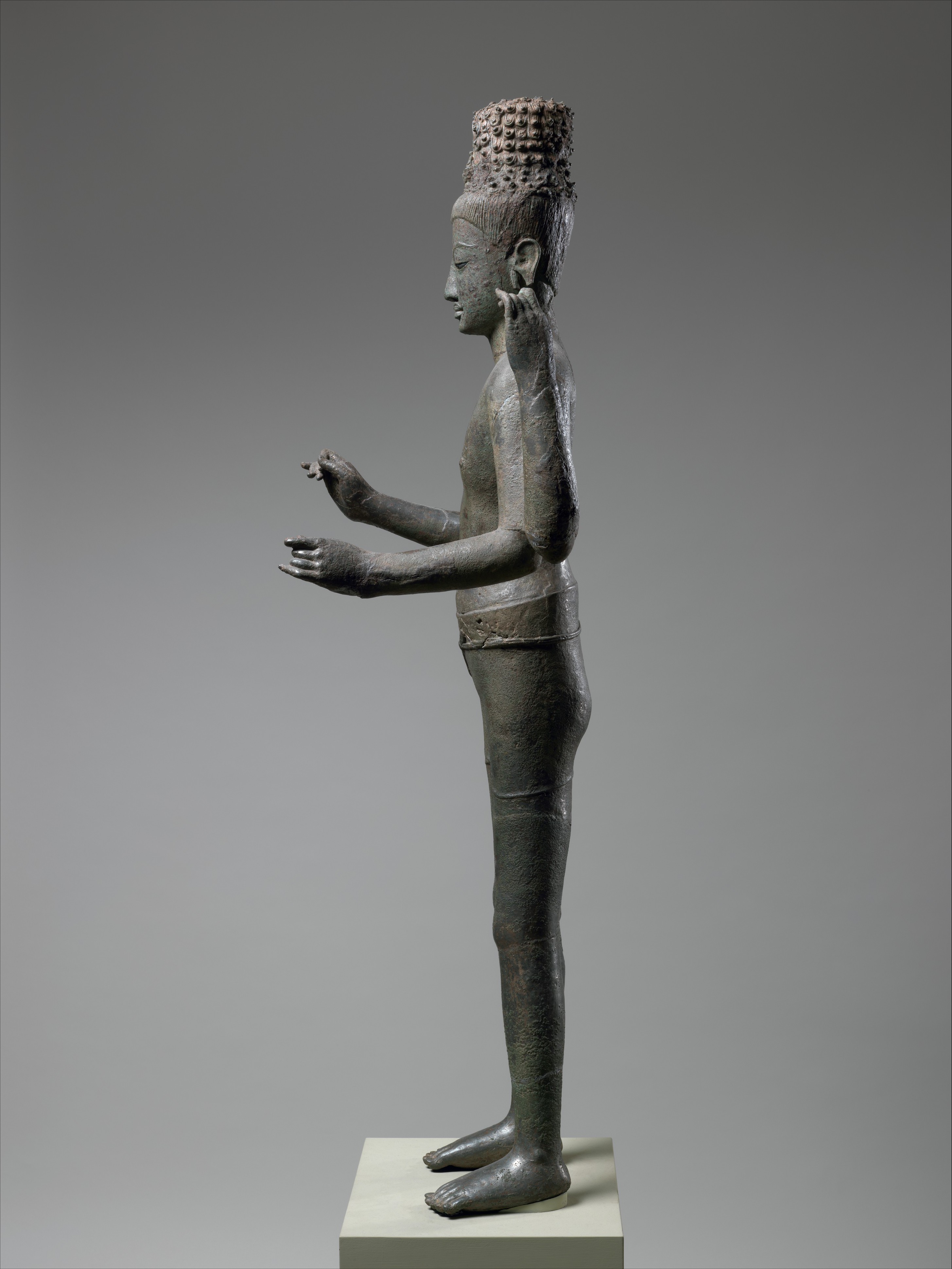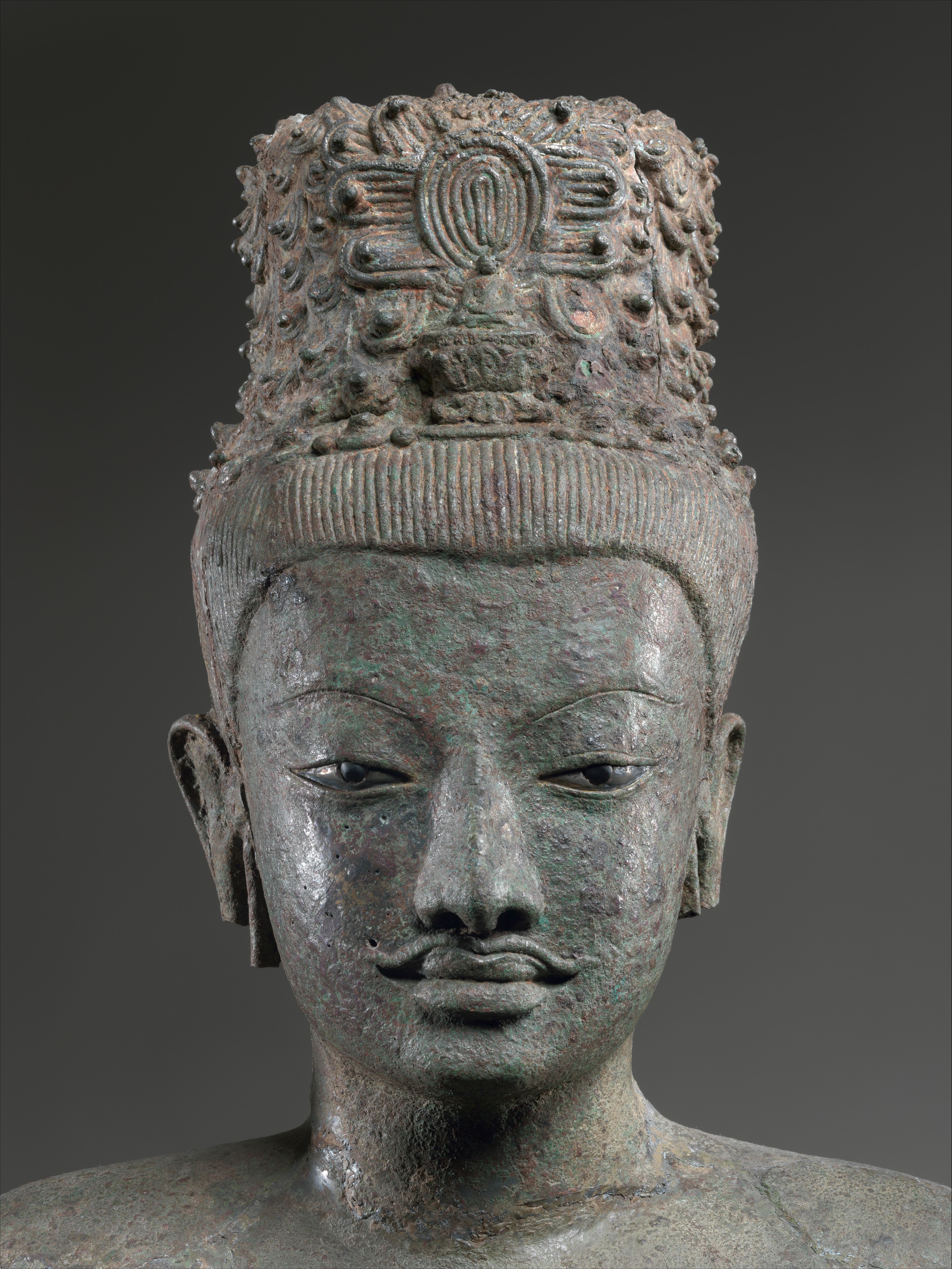Bodhisattva Avalokiteshvara
The savior Avalokiteshvara, identified by the seated image of the Buddha Amitabha in his headdress, embodies infinite Buddhist compassion. The cult of ascetic bodhisattvas—observe his simple attire—was particularly powerful in Southeast Asia during the seventh and eighth centuries. This bronze image has a high tin content which would have given it the appearance of silver when newly cast. It was undoubtedly the product of elite royal patronage, yet the region where it was discovered, in northeastern Thailand, remains an historical enigma. It may be linked to a polity referred to as Canasa, with a capital named Canasapura, somewhere in the Khorat Plateau of northeast Thailand. But associating this object with that kingdom is speculative at best. Essentially the polity responsible for this extraordinary high quality and high value object remains unknown.
#7992. Four-armed Avalokiteshvara, the Bodhisattva of Infinite Compassion
-
7992. Four-armed Avalokiteshvara, the Bodhisattva of Infinite Compassion
-
2603. Four-armed Avalokiteshvara, the Bodhisattva of Infinite Compassion
Playlist
Due to rights restrictions, this image cannot be enlarged, viewed at full screen, or downloaded.
This artwork is meant to be viewed from right to left. Scroll left to view more.








